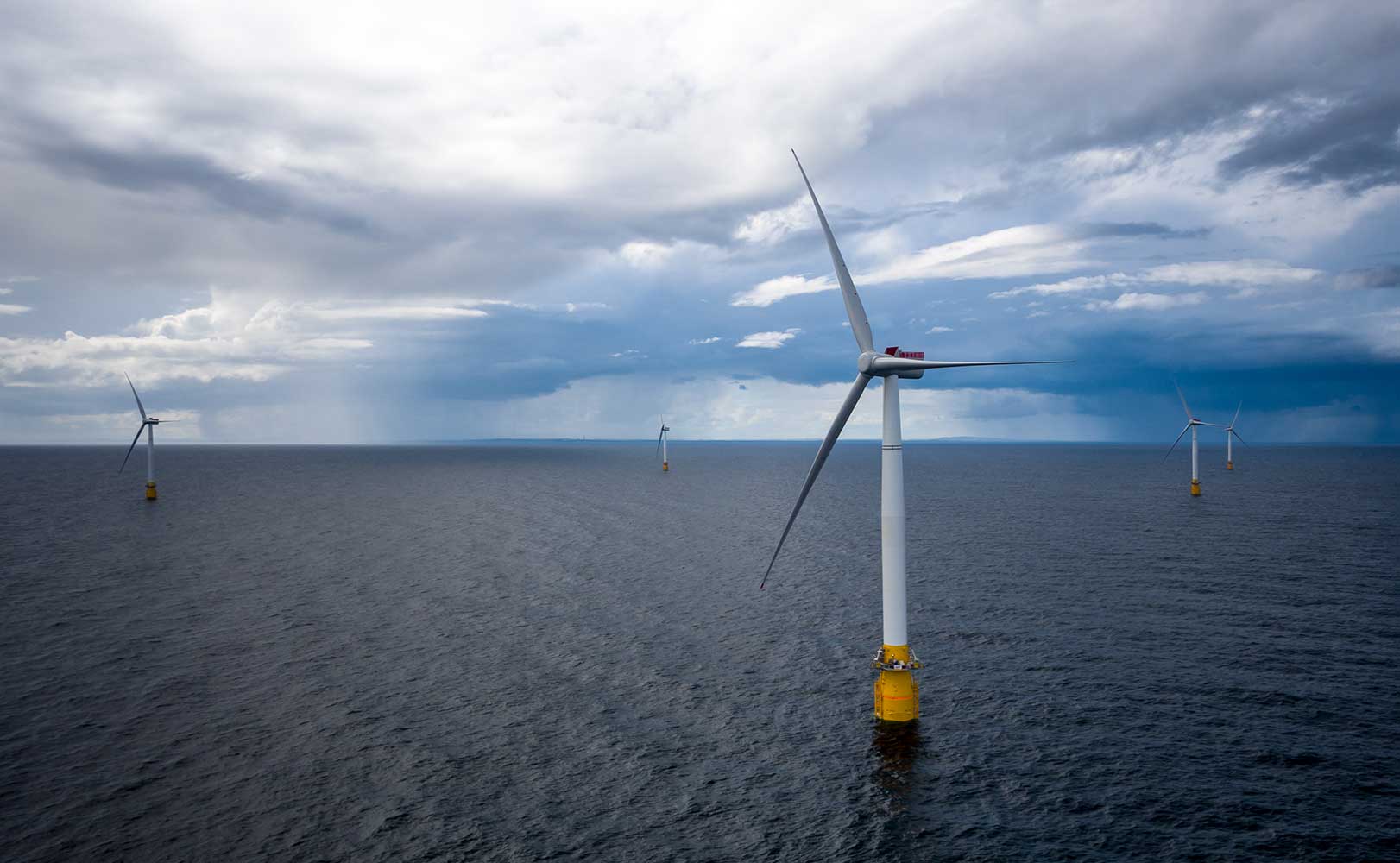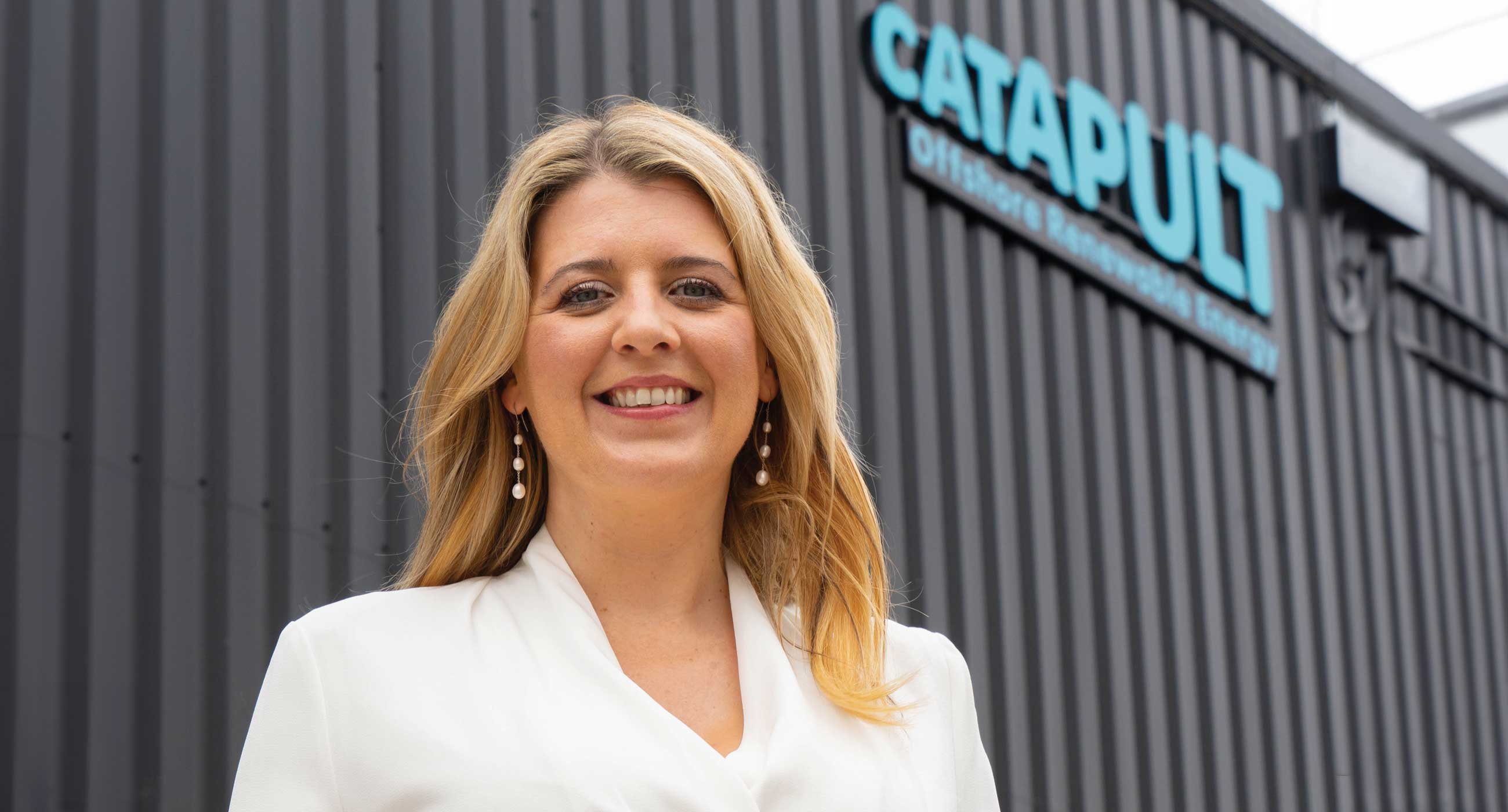Leading innovation in offshore wind
Cristina Garcia-Duffy inspires her team to make futuristic wind farming a sustainable offshore reality
For Cristina Garcia-Duffy, the difference between managing and leading is more than semantics. Garcia-Duffy, technical director and member of the executive team at the Offshore Renewable Energy (ORE) Catapult in the United Kingdom, leads the research and development of new innovations in offshore wind farm technologies, including next-generation turbines, electrical equipment, and digital and robotics applications for wind farm design, manufacturing, installation, operations and maintenance.
Broadly, Garcia-Duffy focuses on the processes required to take good ideas and turn them into new tools and technologies that improve the performance and reduce risk and cost of existing and future wind farms. At its core, though, her work is about enabling high-performing teams. And that starts with a firm grounding in the engineering fundamentals Garcia-Duffy learned as a student earning a doctorate in aerospace engineering at Washington University in St. Louis in 2008 and then honed through more than 15 years in research, technology, strategy and investment in aerospace products.
“I'm an advocate of not letting go of your technical expertise too soon in your career,” Garcia-Duffy said. “I'm now focused on creating the vision and nurturing teams to deliver, yet I still remain close to the details and interdependencies enough to make informed decisions on whether a technology is feasible and will bring sufficient benefit, how long it will take to develop, how costly it’s going to be, and where we might have pinch points.
“Without that engineering background, that technical understanding and expertise, I would be managing, not leading,” she said.

Photo of the Kincardine Offshore Wind Farm project courtesy of Principal Power 2.
Curiosity takes flight
From an early age, Garcia-Duffy took joy in air travel, often flying from her home in Spain to visit her grandparents in Ireland.
“I have fond memories of my travels, at a time where flying was part of the holiday experience,” Garcia-Duffy said.
“Flying also sparked my interest and curiosity. I didn't know anything about physics, and I would itch to know how those machines were staying afloat in the air.”
Garcia-Duffy would learn the answers through her studies in aerospace engineering. Like many engineers, Garcia-Duffy delights in hands-on problem solving, preferring to “learn by doing, break a few things, fail fast, and then learn from that experience.”
Without that engineering background, that technical understanding and expertise, I would be managing, not leading.
—CRISTINA GARCIA-DUFFY
That approach drew Garcia-Duffy to Missouri, where she worked with Swami Karunamoorthy at Saint Louis University as a master’s student and then to WashU, where she worked with David Peters, the McDonnell Douglas Professor of Engineering, as a doctoral student. Throughout her graduate studies, Garcia-Duffy put into practice what she’d learned, which at the time was focused on rotary wing (helicopter) aeromechanics.
She also connected with leading experts across aerospace and mechanical engineering who showed her the value of taking a “helicopter view” of engineering problems.
“When you're doing a PhD, usually you're very deep into your field, very narrow, very focused, so I was lucky to hear from more experienced researchers and experts in industry who made me look up and across,” Garcia-Duffy recalled.
“They made me ask myself, ‘How can I apply what I'm doing to other things? How can other approaches be applied in many areas, not just in the narrow field you're studying?’”
New frontiers for wind energy
Garcia-Duffy’s curiosity and adaptability serve her well as she and her team develop next-generation sustainable energy technologies, increasingly focusing on floating wind projects. With ORE Catapult, the U.K.’s leading innovation center for offshore renewable energy, established in 2013 by Innovate UK, the U.K. government’s innovation agency, Garcia-Duffy is addressing major roadblocks to wind energy generation: unlocking huge capacities at sea far away from shore, where the wind blows faster but the water depth is too large for fixed-bottom wind turbines.
Traditional offshore wind turbines have a fixed pylon anchored in the surface of the seabed a short distance from the coast, and where the ocean is relatively shallow. They’re connected to the onshore electrical grid via cables. While these offshore farms provide useful alternatives to onshore wind production, near-coastal real estate is limited and often in high demand.
“Every country in the world is restricted by limited coastal availability, so if you want to reach more sites in deeper water, sites that are windier because they’re farther away from shore, then you can no longer have a tower connecting your wind turbine to the seabed because it’s prohibitively expensive,” Garcia-Duffy said. “That’s where you need floating wind. And that’s a completely different engineering concept.”
Floating wind farms, Garcia-Duffy says, are the next frontier of wind energy and will unlock sites all over the world, including a vast variety of coasts in the United States where the seafloor drops precipitously only a short distance offshore. Floating wind requires engineers to retool structures that were originally land-based and static to accommodate dynamic motion, variable sea states and wind conditions while maintaining stability and functionality.
To do this, Garcia-Duffy and her colleagues at ORE Catapult are developing the technologies necessary to place thousands of wind turbines on floating complexes.
Every country in the world is restricted by limited coastal availability, so if you want to reach more sites in deeper water, sites that are windier because they’re farther away from shore, then you can no longer have a tower connecting your wind turbine to the seabed because it’s prohibitively expensive.
—CRISTINA GARCIA-DUFFY
The helicopter view and having it all
Opening herself to different perspectives and adapting accordingly – adopting the helicopter view she learned in graduate school – is a cornerstone of Garcia-Duffy’s approach to life and career. As a leader, she maintains her connection with the technical details of her projects and encourages early career engineers to do the same. When she’s not solving complex engineering problems, Garcia-Duffy, who is married with two young children, likes to spend time with friends and family, is an avid reader and a cuisine enthusiast.
“When you have a career and you have aspirations, you're traveling a lot, you're supporting a sector that needs to move really fast, and then you have your family and a whole life at home, you need to be practical and organized,” Garcia-Duffy said. “You need to carefully compartmentalize your time. Then, you can have it all.”
Career Highlights
Prior to joining ORE Catapult, Cristina Garcia-Duffy pushed the aerospace industry forward as the:
- Head of Technology –Strategy and Sustainability for the 0Aerospace Technology Institute, where she led the development and delivery of technology strategy for the entire air transport sector in the U.K.
- Technology Manager for Leonardo Helicopters, where she managed projects related to high-performance rotorcraft research and development
- Lead for Project Zero, where she and her partners delivered the world’s first electric autonomous tilt-rotor demonstrator aircraft in only 12 months

